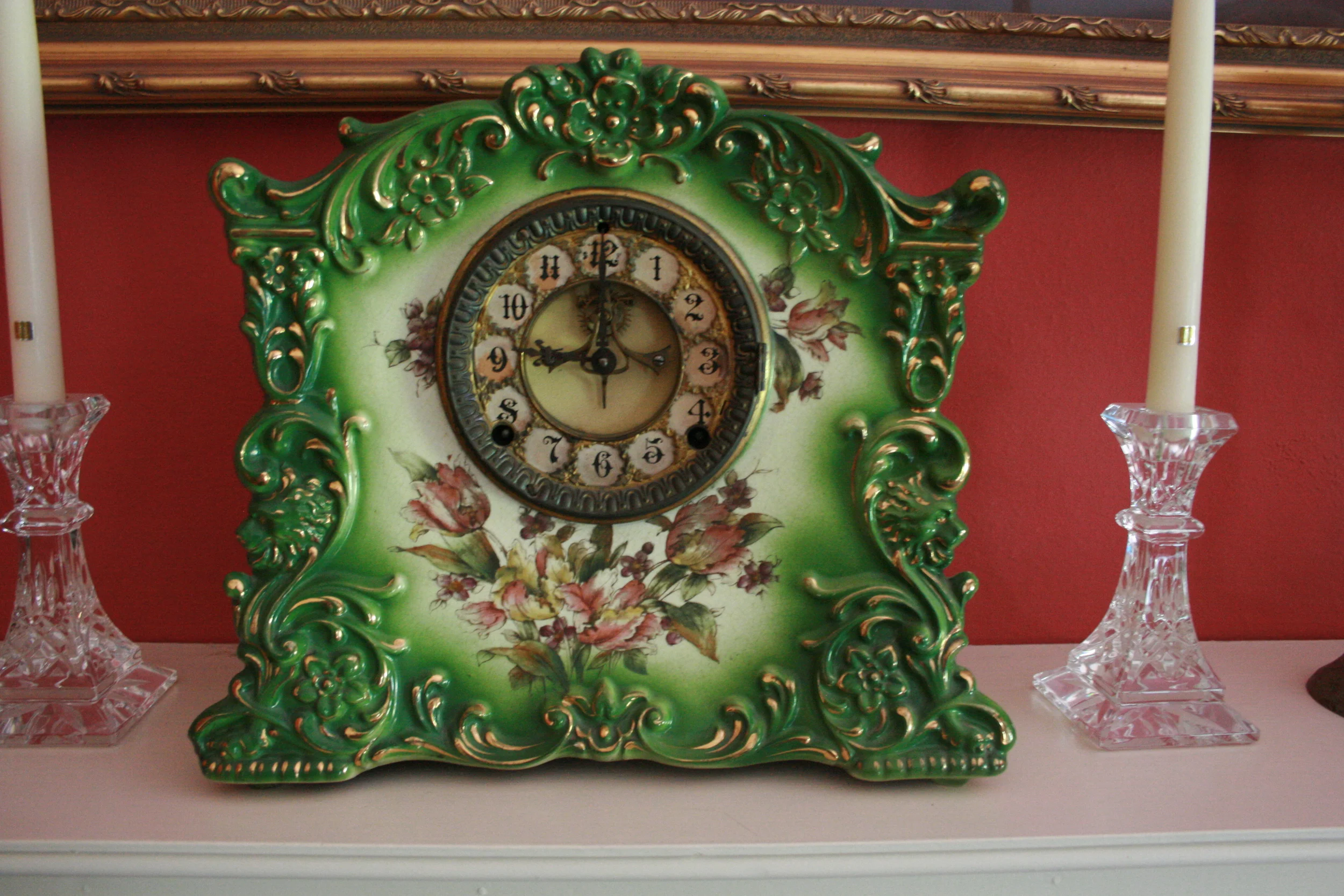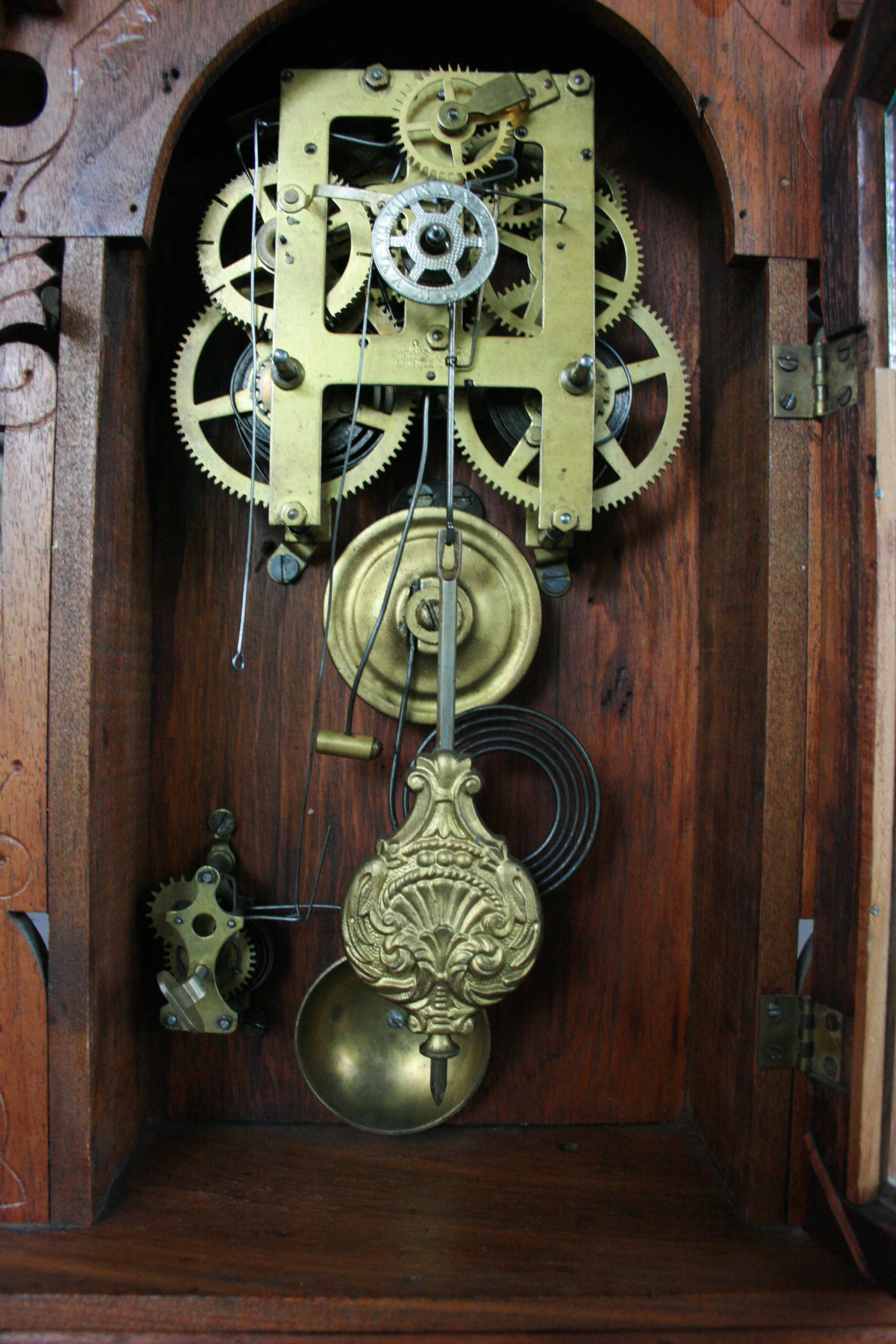There is something fascinating about machines, especially old clocks. They are not from a world of electronic data transfer. Every action requires a physical exchange of force and motion. Gears, pinions, pulleys, levers, and ratchets driven by weights or springs. All moving to an exact pitch of a variety of release mechanisms that give us our division of days. And the basic design has changed very little in hundreds of years.
I started collecting and repairing clocks around 2010, but my fascination with them extends to my earliest memories. No formal training, just a couple of good books and a lot of cheap broken antiques from ebay to practice on. Here are some of my favorites.



This is a Waterberry 8 day clock I've owned for about 28 years. The mainspring snapped while winding, taking off the enamel around the keyhole and nearly taking my fingers with it. I still love this clock. Keeps good time, nice quiet tick-tock, and a subdued masculine gong.
Ingraham 30 hour steeple clock from around 1845. Face has been painted in patches to cover the chips but otherwise in good cosmetic condition and good working order. Daily winders are a pain to maintain and therefore not very popular today. The tick-tock is moderate and soothing, but the gong is a horrific clank that makes everyone who's not familiar with it stop what they're doing and stare. Thought about changing it but would rather keep in original.




Gilbert porcelain 8 day clock with open escapement from 1903. This was originally owned by my great grandmother from my mothers side. Haven't attempted repair of this one yet but should be easy as it was running several years ago, before my mother got tired of winding it.




Ingraham gingerbread clock from 1879. 8 day movement with alarm mechanism. This was in my great aunt's house and is rather finicky about running. Gong base and pendulum have been spray painted gold but the case is in perfect original condition.

